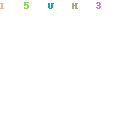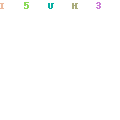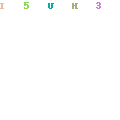Having undergone several changes, particularly over the past three decades, Chakraberia Road in southern Kolkata does not have many colonial buildings and structures left. The residents of this part of the city have exhibited a growing preference for tall buildings devoid of any character and a strong desire to emulate western architectural and design concepts when building and choosing their homes, which are now associated with an upwardly mobile family in urban India.
This demand has resulted in a significant part of south Kolkata losing entire neighbourhoods to gentrification and colonial and post-colonial architecture that was once unique to Kolkata’s architectural landscape being razed. In the case of Chakraberia Road, this has altered the face of one of the city’s oldest neighbourhoods.
The road finds mention in A Upjohn’s ‘Map of Calcutta & its Environs’, 1794, one of the earliest documented maps of the city. But in this map, the neighbourhood of Chakraberia is referred to as ‘Dhee Chuckerberh’ and covers a substantial portion of the city’s limits in the late 1700s. The ‘Dhee’ in Upjohn’s map appears to be a corruption of the word ‘Dihi’, and likely came from the term ‘Dihi Panchannagram’.
In A Upjohn’s ‘Map of Calcutta & its Environs’, the neighbourhood of Chakraberia is referred to as ‘Dhee Chuckerberh’ and covers a substantial portion of the city’s limits in the late 1700s. Upjohn’s map of Calcutta was developed as a result of a survey undertaken in 1792 & 1793 by A. Upjohn. (Courtesy: Victoria Memorial Hall museum archives, Kolkata)
‘Dhee Chuckerberh’ came to be a part of the developing metropolis of Calcutta in 1717, when the British East India Company rented 38 villages near the city from Mughal Emperor Farrukhsiyar. In 1758, the Company went on to purchase 55 villages, including the 38 that it had previously rented, from Nawab Mir Jafar, the first dependent Nawab of Bengal.
Subscriber Only Stories
These were all incorporated into what formed the outer fringes of the developing city and were called ‘Dihi Panchannagram’, the meaning of which is ‘55 villages’. These villages lay outside the Maratha Ditch, and this ditch, approximately 5 kilometres long, was excavated in 1742 in a perimeter around the city of Calcutta, to protect the British from the Maratha invasion that never came, and was entirely funded by taxes paid by Indians.
 Unlike some of Kolkata’s other neighbourhoods, there isn’t much documented history available for Chakraberia, and as a result, it has no long list of compelling pre-Independence stories as some other neighbourhoods do. (Express photo)
Unlike some of Kolkata’s other neighbourhoods, there isn’t much documented history available for Chakraberia, and as a result, it has no long list of compelling pre-Independence stories as some other neighbourhoods do. (Express photo)
In his book ‘A History of Calcutta’s Streets’, historian P Thankappan Nair writes that when the Company acquired ‘Dhee Chuckerberh’ as part of ‘Dihi Panchannagram’, the villages of Ballygunj, Gudsaha, Bowanipore and Chuckerberh were incorporated within this ‘dihi’, indicative of its massive size and why it is shown to cover a substantial portion of Calcutta’s city limits in A. Upjohn’s 1794 map of Calcutta.
Nair writes that ‘Chuckerberh’ in the dihi’s name, and now the street’s, possibly comes from the word ‘shakkerberh’ or the sweet ber fruit (Indian jujube/Ziziphus mauritiana), that may have grown in large quantities in the ‘dihi’ before it became more densely populated, even prior to it forming a part of ‘Dihi Panchannagram’. In Bengali today, the neighbourhood’s name is also pronounced as ‘Chokkoberiya’.
Advertisement
 As with most of south Kolkata, some of Chakraberia Road’s old colonial and post-colonial buildings have been replaced with modern apartment buildings, but a handful of old residential buildings continue to remain standing. (Express photo)
As with most of south Kolkata, some of Chakraberia Road’s old colonial and post-colonial buildings have been replaced with modern apartment buildings, but a handful of old residential buildings continue to remain standing. (Express photo)
Today, Chakraberia Road has been absorbed almost entirely into the larger neighbourhood of Bhawanipore. But it remains a largely residential one, with large numbers of Gujarati, Marwari and some Bengali residents. As with most of south Kolkata, some of Chakraberia Road’s old colonial and post-colonial buildings have been replaced with modern apartment buildings, but a handful of old residential buildings continue to remain standing.
Unlike some of Kolkata’s other neighbourhoods, there isn’t much documented history available for Chakraberia, and as a result, it has no long list of compelling pre-Independence stories as some other neighbourhoods do.
But at the juncture where Chakraberia meets the neighbourhood of Kalighat, a narrow bylane called Nafar Kundu Road runs by. A 10-minute walk away from this bylane, in southern Chakraberia, stands a memorial commemorating the man after whom the bylane is named, Nafar Kundu, for acts of public service in May 1907.
Advertisement
 But at the juncture where Chakraberia meets the neighbourhood of Kalighat, a narrow bylane called Nafar Kundu Road runs by. (wikimedia commons)
But at the juncture where Chakraberia meets the neighbourhood of Kalighat, a narrow bylane called Nafar Kundu Road runs by. (wikimedia commons)
A marble plaque on the memorial provides some more insight: “To the memory of Nafar Chandra Kundu who lost his life in a gallant attempt to rescue two Mahomedan coolies from the manhole opposite. He was a member of the Entally Ramakrishna Mission whose life was devoted to doing good to others, irrespective of caste, creed or colour. This monument is erected by his admirers, European and Indian, by public subscription.” Sometime in 1924, the Calcutta Municipal Corporation named the bylane in commemoration of Kundu’s public service in 1924.
Source: https://indianexpress.com/article/cities/kolkata/streetwise-kolkata-chakraberia-kolkata-older-city-8207917/


